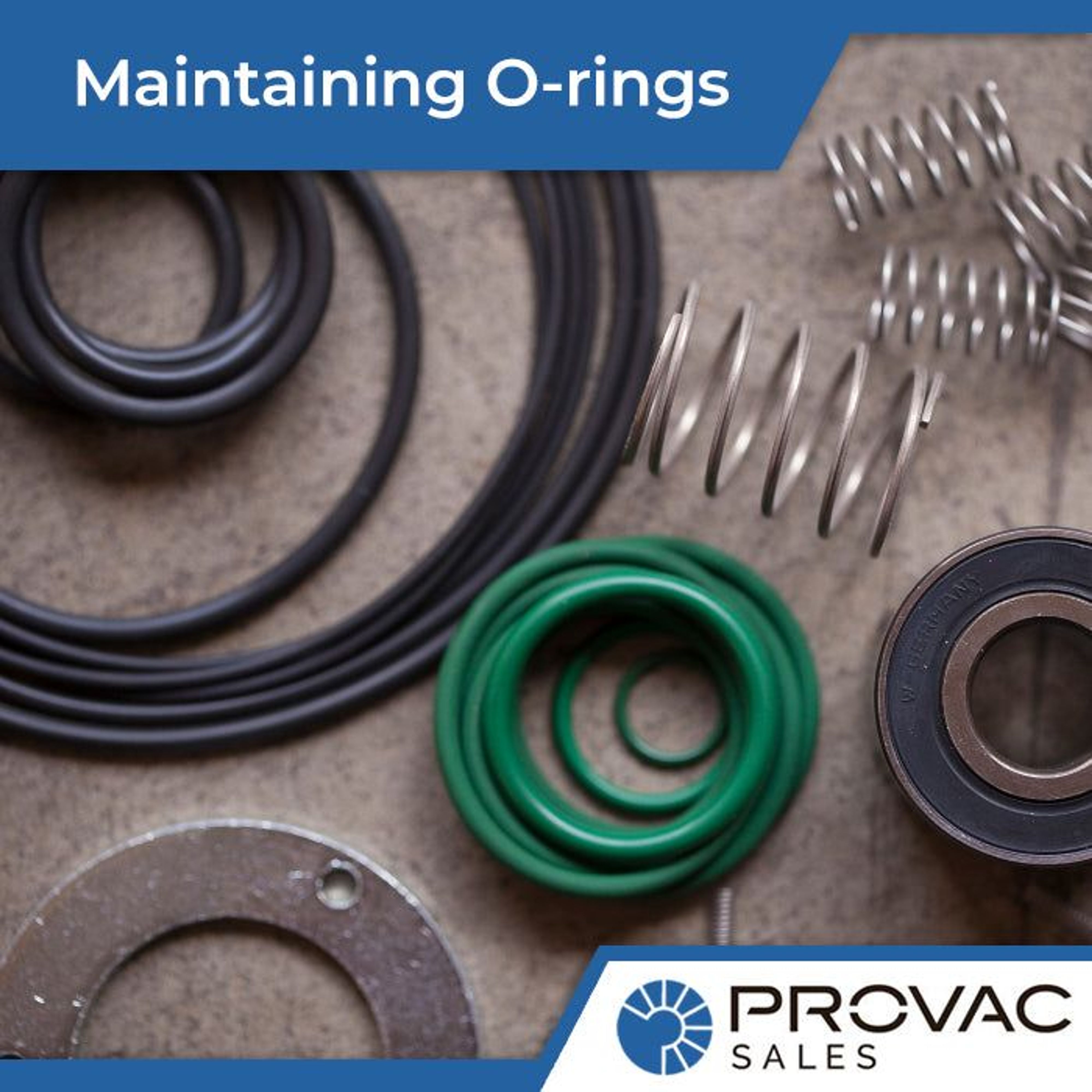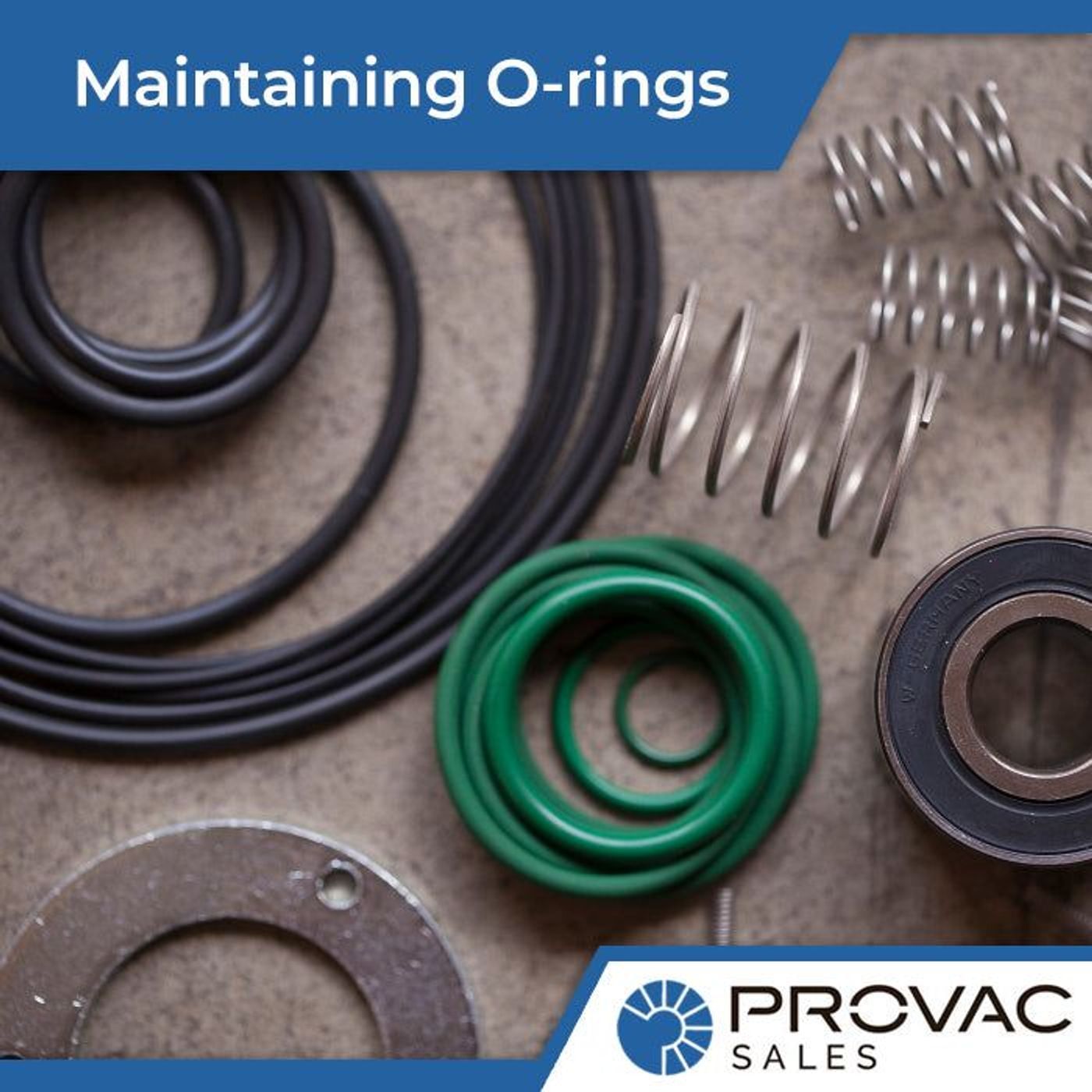O-rings are critical to the success of any vacuum system, but they, unfortunately, lose their elasticity over time and crack thus leading to the infiltration of air into the vacuum chamber. When you replace your O-rings, you must make sure that you use the right type as specified by the original manufacturer of the equipment.
O-rings materials are selected for a particular location depending on the expected temperature exposure while in operation. Teflon, Viton, and Buna N are the most common general-purpose type.
The O-ring can only function properly if it is free of debris, smooth, free of scratches or cracks, rounded rather than flat, and sufficiently lubricated. If an O-ring is exposed, such as when the front door of a single chamber vacuum furnace is either opened or closed, it needs to be wiped clean before each run.
If you run your finger carefully over the surface of the O-ring while wearing a tight-fitting latex glove, you can easily detect minute particles or defects on its surface. You should wipe the O-ring clean using a clean soft cloth and some alcohol and apply a high-quality vacuum grease in a very light coating to ensure better sealing.
Despite what many people think, excess vacuum grease doesn’t ensure better sealing, which is why you should remove it because it attracts debris that may compromise the ability of the O-ring to seal.
Failures of O-Rings
O-ring seals regularly fail prematurely in applications due to either improper material selection or design. A seal may fail in 3 general ways from the point of view of the end-user:
- Altered Appearance
- Contamination
- Leaking
The contributing factors are vacuum or pressure-induced stress as well as stress that’s thermally induced. Elevated temperatures can lead to degradation of the seal, outgassing, or swelling. Vacuum or pressure environments or altering between these two may lead to weight loss and outgassing.
The failures of O-rings can be classified into the following broad categories:
- Abrasion: Parts of the seal or the seal itself exhibit a flat surface that’s parallel to motion direction Loose scrapes and particles are usually found on the surface of the seal. The contributing factors may include excess temperatures, poor elastomer surface finish, rough sealing surfaces, dynamic motion, and a process environment that contains abrasive particles.
- Flattening: The seal exhibits a cross-section that’s flat-sided with the flat sides corresponding to the mating surfaces of the seal. The contributing factors for this include excess temperatures, excess compression, high compression set elastomers, improperly cured elastomers, and excess volume swell.
- Degradation: The seal exhibits pits, cracks, blisters, voids, or pockmarks on the surface. Absorption of gas at high pressure as well as the subsequent quick pressure reduction. The absorbed gas forms blisters and ruptures the surface of the elastomer as pressure is removed rapidly. The contributing factors for this include low-modulus or hardness elastomers, rapid changes in pressure, and incompatibility with the vacuum or pressure or thermal environment.
- Extrusion: Ragged edges form on the low-pressure side of the seal that appear tattered. The contributing factors for this include excess pressure, excess clearances, excessive gland fill, low-modulus or hardness elastomers, incorrect sizing, sharp gland edges, and irregular clearance gaps.
- Installation Damage: Parts of the seal or the seal itself may exhibit small cuts, gashes, or nicks. The contributing factors for this include incorrect tools, poor techniques, incorrect sizing of elastomer, sharp edges on components or glands, elastomer surface contamination, and low-modulus or hardness elastomer.
- Over-Compression: The seal exhibits flat surfaces that are parallel and correspond to the contact areas and may develop splits around its circumference within the surfaces that are flattened. The contributing factors for this include incorrect design i.e. not accounting for thermal volume changes or excess compression.
- Thermal Degradation: The seal may start exhibiting radial cracks located on the surfaces with the highest temperature. Certain elastomers may also exhibit signs of softening i.e. a shiny surface due to excessive temperatures. The contributing factors for this include excess temperature excursions, elastomer thermal properties, or cycling.
- Plasma Degradation: The seal often exhibits discoloration and powdered residue on the surface as well as possible elastomer erosion in exposed areas. The contributing factors for this include electron bombardment (heating), ion bombardment (sputtering), chemical reactivity of plasma, incompatible seal material, and improper gland design.
- Other: Spiral failure whereby the seal exhibits marks or cuts that spiral around its circumference. The contributing factors for this include low-modulus or hardness elastomer, slow reciprocating speed, tight or difficult installation, excess gland width, irregular O-ring surface finish (including excessive parting line), insufficient lubrication, and rough or irregular gland surface finish.
Popular Misconceptions
Here are some of the most common misconceptions about working with O-rings:
- Vacuum grease that’s applied to the surface of the O-ring is responsible for sealing and that the more the grease that’s applied, the better ad potentially longer the seal will last. The reality is that the vacuum grease is only intended to provide lubrication to seat properly under the applied compression forces and should ideally be a very thin layer such that if you move your finger along the surface of the O-ring it will glide or slide unhindered without any appreciable amount of grease build-up.
- You don’t need to re-grease O-rings after every run. False. You should always wipe your O-rings clean followed by running a finger that’s protected by a latex glove over the O-ring’s surface to check for any potential damage. It is a great way to detect minute particles of grit and dirt and identify any nicks or areas that require cleaning and re-greasing. It is critical to clean the O-ring’s surface thoroughly using alcohol, acetone, or methyl-ethyl- ketone before re-greasing. Always use manufacturer-approved solvent for this.
- The shelf-life of a typical O-ring is forever. The reality is that O-rings actually have a shelf life.





